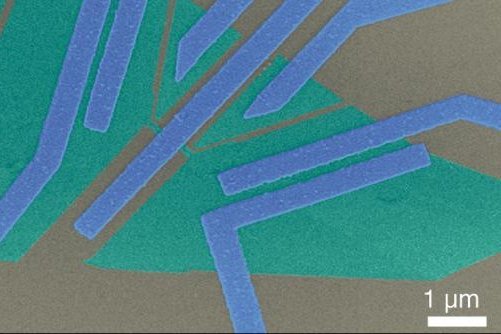To trigger entanglement using heat, researchers layered graphene and metal electrodes within a superconducting material. Photo by Aalto University
Jan. 8 (UPI) -- An international team of scientists has shown that temperature differences in a superconductor can be used to trigger quantum entanglement.
The discovery, recounted Friday in the journal Nature Communications, promises to accelerate the development of everyday quantum devices.
Quantum entanglement describes the inextricable link between multiple particles, whereby the measure or manipulation of one particle is observed in the others, regardless of time or location. This phenomena
"Quantum entanglement is the cornerstone of the novel quantum technologies," study co-author Pertti Hakonen said in a press release.
"This concept, however, has puzzled many physicists over the years, including Albert Einstein who worried a lot about the spooky interaction at a distance that it causes," said Pertti Hakonen, a professor of physics at Aalto University in Finland.
In quantum computing, scientists rely on entanglement to combine distinct quantum systems, boosting computational capacity.
"Entanglement can also be used in quantum cryptography, enabling the secure exchange of information over long distances," said co-author Gordey Lesovik, from the Moscow Institute of Physics and Technology
Finding ways to easily and precisely generate entanglement is essential to the development of new quantum technologies.
To trigger entanglement using heat, scientists layered graphene and metal electrodes within a superconducting material.
"Superconductivity is caused by entangled pairs of electrons called 'Cooper pairs.' Using a temperature difference, we cause them to split, with each electron then moving to different normal metal electrode," said co-author Nikita Kirsanov.
"The resulting electrons remain entangled despite being separated for quite long distances," said Kirsanov, a doctoral candidate at Aalto University.
The experiments proved temperature-triggered Cooper pair splitting yields corresponding electrical signals in divergent layers of superconducting material.
Scientists suggest the layered superconductor developed for their experiments could be used to conduct a variety of quantum thermodynamical tests.















